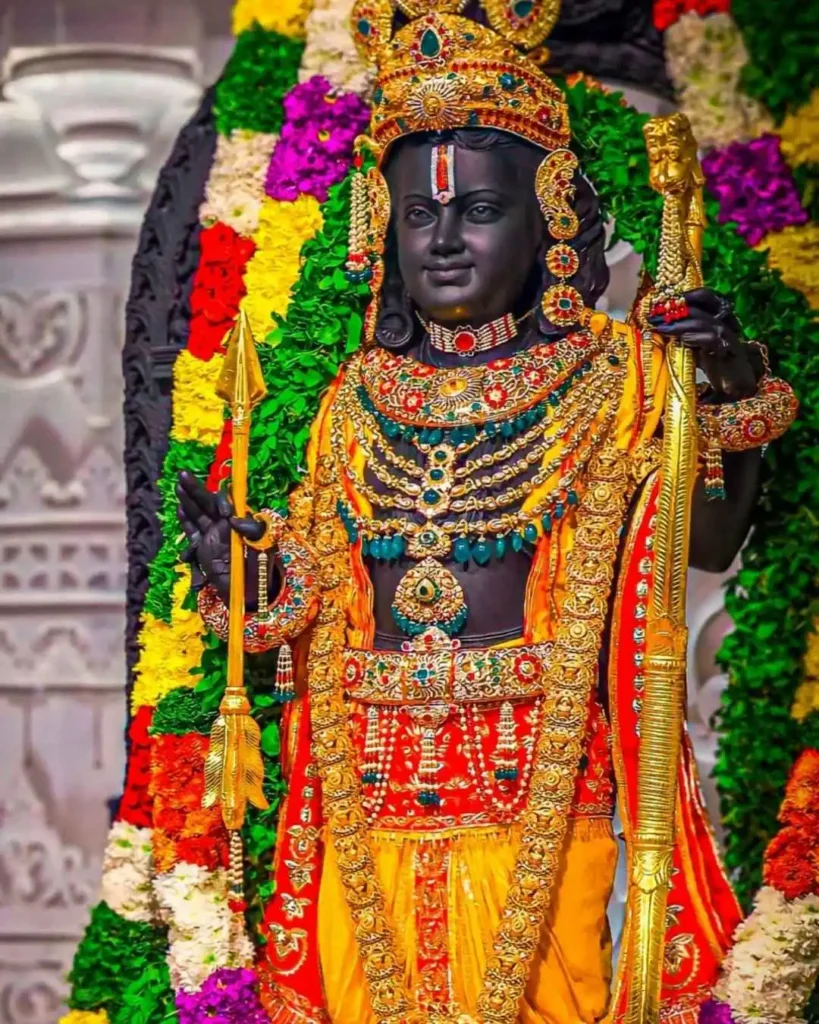Image Credit of Ayodhya @ By Prime Minister’s Office (GODL-India)
Ayodhya is an eternal pilgrimage on the serene banks of the river Sarayu in Uttar Pradesh. It is more than just a city; it’s a soul-stirring chapter in the great epic of Indian spirituality and history. Revered as the birthplace of Lord Rama, Ayodhya draws devotees, history enthusiasts, and curious travellers in equal numbers, eager to witness and experience its ancient roots, sacred aura, rich heritage, and vibrant spiritual life.
Ayodhya’s ancient roots stretch back millennia. Ramayana, the popular mythological scripture is based on the life of Lord Ram and its origin can be traced back to Ayodhya. According to Hindu mythology, it was the capital of the legendary Kosala kingdom and the birthplace of Lord Rama, the seventh avatar of Vishnu. Chronicles recall Ayodhya as a city ruled by illustrious kings; Ikshvaku, Bhagirath, Dasharath, and Ram; with tales of harmony and prosperity in every era.
The city’s spiritual importance doesn’t stop at Hinduism; Ayodhya has been a significant centre for Buddhism and Jainism as well, hosting Buddhist monasteries, stupas, and Jain temples dating as far back as the Maurya and Gupta periods. Over time, Ayodhya has come to symbolise harmony, devotion, and the enduring power of faith.
Ayodhya Ram Mandir: The Heart of Faith
At the heart of Ayodhya’s spiritual resurgence stands the magnificent Ayodhya Ram Mandir, also referred to as the Ayodhya Mandir or Shri Ramlalla Mandir. Inaugurated on 22 January 2024, this grand temple marks the spot many Hindus believe to be Lord Rama’s birthplace (Ram Janmabhoomi). The temple is built in the Māru-Gurjara Nagara style with intricate carvings, soaring shikharas, and an octagonal sanctum. Spread over 4 hectares, the complex also includes grand halls, secondary temples, and beautiful green spaces designed for spiritual contemplation.

Ram Mandir Ayodhya
The site has a long and complex history, intertwined with periods of harmony and conflict, transformation, and renewal. The new Ram Mandir now stands as a symbol of unity and devotion, welcoming lakhs of visitors daily and reinforcing Ayodhya’s status as a must-visit spiritual destination.
Note: Given the importance and popularity of the temple, it is always advised to plan your visit early to avoid crowds, especially around major Hindu festivals.
Must-Visit Places in Ayodhya
- Hanuman Garhi
This fort-like temple atop a hill is dedicated to Lord Hanuman. Climb the steps to receive blessings and admire the length and breadth of Ayodhya, especially enchanting at sunrise or sunset as far as your vision can go.
- Kanak Bhawan
A stunning temple gified to Sita, Kanak Bhawan is famous for its sparkling idols of Lord Rama and Sita decked in gold. The temple’s lively atmosphere and intricate artwork are a delight for all visitors.
- Nageshwar Nath Temple
Said to have been built by Kush (son of Rama), this Shiva temple is an important stop, especially during the festival of Shivratri when it draws huge crowds of devotees.
- Ram ki Paidi and Swarg Dwar
These riverfront ghats, especially Ram ki Paidi, are iconic for their evening aarti with thousands of diyas lighting up the Sarayu river, creating a dazzling, spiritual atmosphere. Swarg Dwar, also known as Ram Ghat, holds deep mythological significance as the place of Lord Rama’s final departure from Earth.

Saryu Ghat
- Treta Ke Thakur
This ancient temple commemorates Lord Rama’s Ashvamedha Yajna. The beautiful idol here is carved from black sandstone and is absolutely worth admiring.
- Tulsi Smarak Bhawan
Dedicated to Tulsidas, the legendary poet of the Ramcharitmanas, this complex houses rare manuscripts, a museum of devotional literature, and regular recitals and Satsang programmes.
- Deokali Temple
Associated with Sita, Deokali Temple houses a splendid idol of Goddess Girija Devi (Deokali Mata), and holds great significance during Navratri.
- Birla Temple (Shri Ram Janki Temple)
Known for its elegant architecture and tranquil ambience, the Birla Temple is another must-visit for its idols of Rama and Sita, beautifully maintained gardens, and calming atmosphere.
Travel Tips and How to Reach
Ayodhya is easily accessible by train, road, and air. Ayodhya Cantt (formerly Faizabad) Railway Station is the main hub, with direct trains from major cities like Delhi, Varanasi, Prayagraj and Lucknow. The newly operational Maharishi Valmiki International Airport Ayodhya Dham connects the city to all major metro cities.
Local transport includes e-rickshaws, auto rickshaws, and cycle rickshaws, making it easy to hop between attractions. Private taxis are also available for a more comfortable experience especially during peak summer and winter.
Where to Stay in Ayodhya
Ayodhya offers a range of accommodation from budget dharamshalas and guesthouses to comfortable boutique hotels. For a special experience, consider booking a stay in the temple guest complexes or ashrams, many of which offer basic but clean rooms and healthy vegetarian food. During peak pilgrim seasons and festivals, make your reservations well in advance.

Lata Mangeshkar Chowk
Dress Code and Etiquette for Temple VisitsLata Mangeshkar Chowk
When visiting the Ayodhya Ram Mandir or other temples in Ayodhya, modest attire is essential. Both men and women should wear clothes that cover shoulders and knees; think traditional kurtas, salwar-kameez, sarees, or long trousers with shirts for men. Avoid shorts, sleeveless tops, or revealing outfits. Footwear should be removed before entering temple premises. Carry a dupatta or shawl for added comfort and respect. Photography may be restricted in some areas; always follow local guidelines.
Essential Travel Tips and Experiences
- The best time to visit Ayodhya is from October to March, when the weather is pleasant for sightseeing and temple hopping.
- Buy local sweets like peda and gujiya, and try traditional vegetarian fare at temple-run kitchens.
Attend the grand aarti at Ram ki Paidi for an unforgettable riverfront experience. - Watch the light and sound shows at key sites for a glimpse into Ayodhya’s living history.
- Carry cash, as digital payment options may be limited in smaller establishments.
A Tale of Ayodhya’s Enduring Legacy
Ayodhya isn’t just a destination; it’s a living legend, brimming with devotion, echoes of ancient tales, and a warmth that welcomes every visitor. From the majestic Ayodhya Ram Mandir to the tranquil ghats and bustling bazaars, Ayodhya stands as a beacon of faith, resilience, and cultural heritage. Whether you’re a pilgrim or a traveller, exploring the many places to visit in Ayodhya is a soul-stirring journey; an immersive dive into the heart of India’s spiritual and historic consciousness.
By: Anushka Singhal
